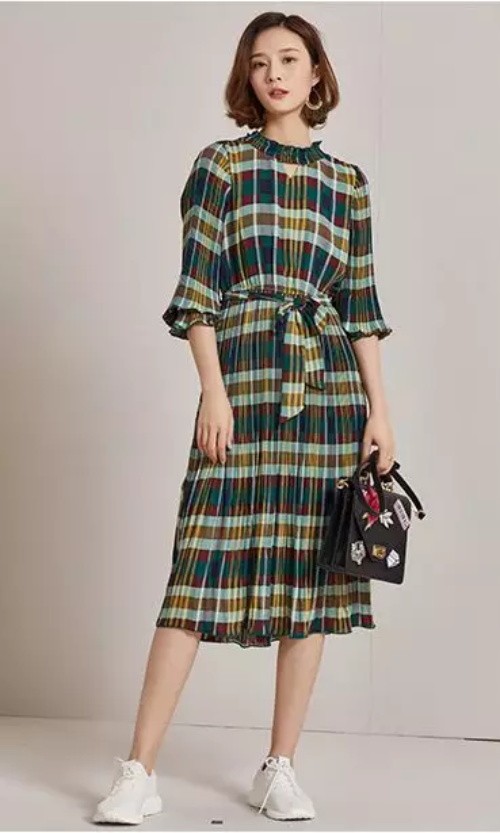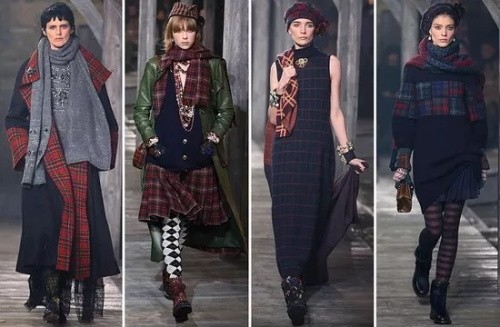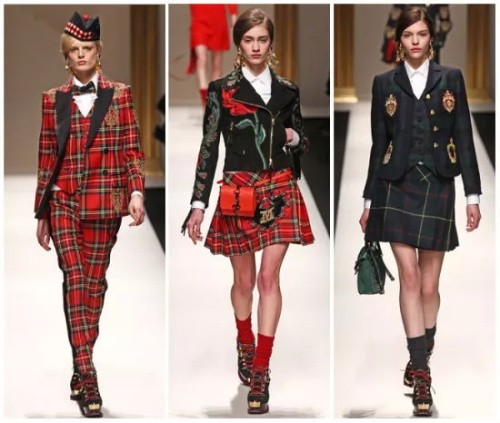JESSAMIN Zhushi radius of women's clothing 2018 spring and summer new checkered belt you play retro
Plaid brings you retro fun, in this ever-changing fashion circle, Plaid is definitely the darling of fashion, with Plaid elements of clothing, will always emit a deep sense of retro. The popularity of Plaid has not been overnight. Since its appearance, people have been revamping their charms repeatedly and repeatedly. Every year, popular keywords appear to be complicated. JESSAMIN Zhushi radius of women's single product recommendation today.
Plaid take you retro fun
In this ever-changing fashion circle, Plaid is definitely the darling of fashion, with Plaid elements of clothing, will always emit a deep sense of retro.
The popularity of Plaid has not been overnight. Since its appearance, people have been revamping their charms repeatedly and repeatedly. Every year, popular keywords appear to be complicated.
JESSAMIN Zhushi radius of women's single product recommendation today

The simple Scottish Plaid pattern allows you to easily wear temperament, do not need too much decoration, comes with a minimalist style is very high-level sense, a simple and neat dress with a classic Plaid is stylish enough.
The primitive form of the lattice was first discovered in the 3rd century AD and is a checkered pattern composed of brown and white. In the European and American textile industry, there is also a saying: "Scottish plaid is equal to the history of a British Empire."

The Scottish rule is called "Tartan" in English. It comes from the word "tirer" in Old French, which means "fancy". Nowadays, everyone mentions the Scottish version, thinking that it represents the emblem of certain families and clans, like badges.
In fact, the earliest TARTAN was a product of fashion. At the time, dyes were needed to dye fabrics, and different types of dyeable berry vegetables were produced in different regions, resulting in different colors in different areas. So, the information people read from Plaid is the type of crop where you live.
Today, people always think that Plaid is related to clan and clan ancestry. Why did this cognition come from? First of all, thanks to the Scottish army's use of Plaid.
In the late eighteenth century, a company named William Wilson & Sons served as the sole supplier of Highlander Tartan plaid fabrics. The producers identified different patterns with the specified numbers, but soon they began to name the plaids. This includes not only the names of Highland tribes, but also the names of cities and even some very fancy titles. However, TARTAN's name is just a convenient memory sales tool.

When George IV visited Edinburgh, Plaid had an "explosive" development and became a veritable "plaid" party. Because every local clan leader who came to see George IV was asked to "wear the exact mark that marks his clan."
Today, Plaid sailed and sailed around the world wearing "Scottish Plaid". It is said that in the United States there is a custom called "kirking of the tartan", which is to let this plaid fabric be blessed in the church.
Scottish Plaid

Scottish tartan has a long history. Since the 1960s, Scottish tartan has always been one of the design elements that are often used. Diversification of forms and practices has the most traditional features.
The basic color of Scottish Plaid is 6 kinds of black, white, red, yellow, green and dark blue, with a minimum of 2 colors and a maximum of 6 colors. Plaid is formed by the combination of ground color + stripes (straight, horizontal lines) into a Scottish pattern, and has grown to more than 4,000 patterns to date.
Whether it is the classic red-black or blue-green plaid, with ankle boots or Martin, will be very retro British temperament, handsome style. With hoods, gloves, hats out of the street is definitely the standard for urban fashion girls.
Woven Fabric,Orange Rayon Woven Fabric,Factory Price Tencel Fabric,Dark Red Tencel Fabric
Shaoxing Weihui International Trade Co.,Ltd. , https://www.weihui-fabrics.com